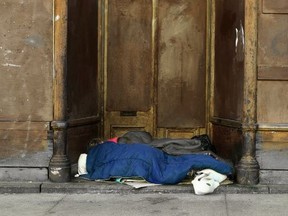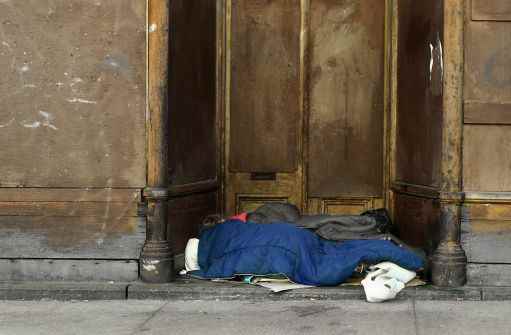It would take a huge injection of cash, roughly $20 million, from senior governments to create the kind of “transformational change” envisioned for London’s emergency shelter system, politicians heard Tuesday.

It would take a huge injection of cash, roughly $20 million, from senior governments to create the kind of “transformational change” envisioned for London’s emergency shelter system, politicians heard Tuesday.
A long-term goal to reduce the use of shelter beds by getting people housed was under the microscope at city hall as the community and protective services committee weighed up $9.9 million in contracts.
But growing needs are putting pressure on shelter budgets and city hall coffers.
“Those are costs the city cannot bear at this point. Not all of it,” Kevin Dickins, deputy city manager in charge of housing, said.
Shelter funding doled out in London comes from Queen’s Park, and has flatlined in recent years, city officials say.
Dickins estimated it would take about $20 million to overhaul London’s shelter system the way city hall planned to do this year. But it canceled a request for proposals when it became apparent the cost to create a new network of smaller “low-barrier” shelters, exceeded the cash available.
Municipalities are looking to the province to make permanent some of the temporary COVID-19 funding it sent to cities to help vulnerable people weather the pandemic. It essentially has tripled the budget for homelessness work in London, Dickins said.
It also provided the opportunity to invest in city-led affordable housing projects and help some shelters with capital costs for repairs.
Still, there are major needs looming.
Directors responsible for two of London’s largest shelters, the Men’s Mission and the Salvation Army’s Center of Hope, applied to speak to the committee about rising costs and concerns.
“The issues we’re facing are absolutely nothing new. Shelter providers have been watching this train come down the tracks for a decade now,” Peter Rozeluk with the Men’s Mission said.
Shelter costs are rising much faster than city funding, he said, similar to the way rents are spiraling upward in London without anywhere near the same boost in wages.
Jon DeActis, head of the Salvation Army’s Center of Hope, said crucial items on the balance sheet such as food, staffing and maintenance have risen significantly (up 55 per cent, 29 per cent and 61 per cent respectively during the last five years).
Other arguments from DeActis and Rozeluk:
- Funding from the province that flows through city hall isn’t keeping pace with growing budget needs, let alone the cost to create and staff “low-barrier” shelters with more staff and supports.
- Social assistance payments are woefully out of whack with rents in London, and across the province. There’s roughly $400 allocated each month for housing for a single person on social assistance. Average rent for available one-bedroom units in London was $1,415 in December.
- Housing supply is a major issue in London, and an area where city hall can make a difference by approving rezoning requests, especially for more density, speeding up the approval process.
- The request for proposals city hall issued last year to reshape its shelter system pitted emergency shelters against one another instead of helping them work together.
City politicians voted 6-0 to endorse the $9.9 million contracts for emergency shelters, plus another $1.1 million for housing allowances to help secure homes for those who are homeless. Both recommendations go to council for final approval on Feb. 15.
